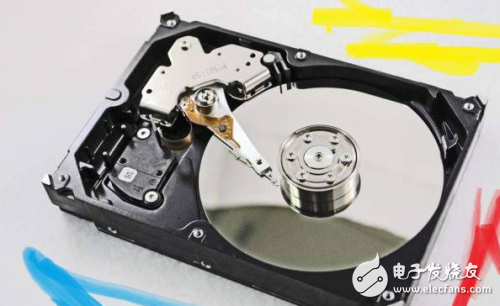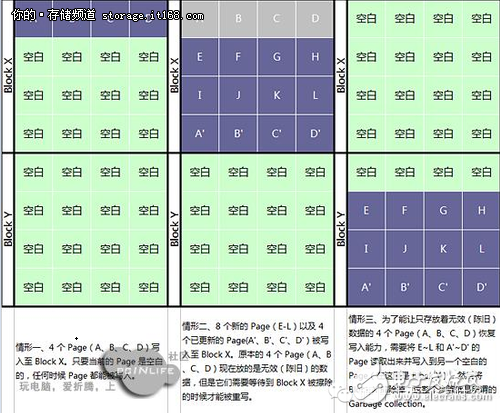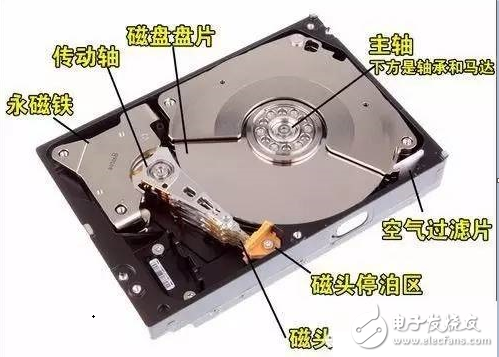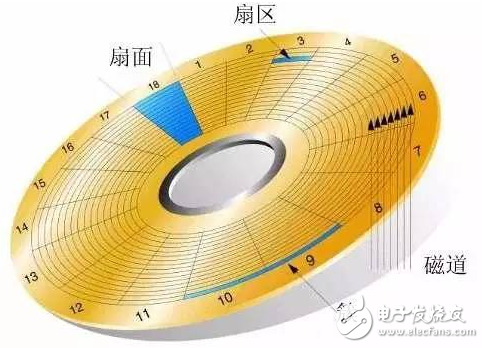Data loss situation 1: accidental deletion and misformatting;
The principle of mechanical hard disk data recovery is: the deletion that people usually do, just let the system modify the first two codes in the file allocation table (equivalent to the "deleted" mark), and the cluster number of the file is in the file. The record in the allocation table is cleared to free up space occupied by the file. Therefore, after the file is deleted, the remaining space of the hard disk is increased; while the real content of the file is still stored in the data area, it has to be overwritten by the new content when the new data is written, and the original data does not disappear before the overlay.
For the FAT format file structure, the file deletion only changes the first byte of the file to E5H, and the rest of the content is not modified, so it can be easily restored. We can use the data recovery software described later to easily retrieve the files we accidentally deleted or accidentally lost. However, it is important to note that when we find that the files are lost and you are ready to use the recovery software, do not install these recovery tools locally, as the software installation may just overwrite the files you just lost. It is best to use data recovery software that can run directly from the CD or mount the drive on another machine for recovery.

Even if the data on the hard disk is deleted, it is only marked on the front end of the data storage, and the logo is deleted. However, it has not been deleted, but the operating system thinks it has been deleted. When the header of this file is read, it will be recognized as deleted and will not continue to be read. The data recovery software is also based on this principle, after reading the file header, instructing to continue reading, and stripping the identifier of the file header. Finally, the complete file is pieced together and the data is restored.
Due to the problem of seek and speed regulation of the mechanical disk, it will lead to lengthy delays and affect the overall response performance of the system. Therefore, the mechanical disk will erase the original data and write only if it is full or needs to use only the sector and track for deleting data.
The characteristics of SSDs are quite different. SSDs have their own processors and caches, which are several times more powerful than mechanical disks. In other words, the SSD can manage storage space by itself. The difficulty in recovering SSD data is due to a mechanism called "garbage collection."
As is known, the NAND FLASH particles used in the solid-state disk have the characteristics of less overwriting and low service life. So the designer designed an overwrite mechanism to balance the wear of the NAND FLASH chip. The "garbage collection mechanism" is one of them. When the system is idle, the storage area occupied by the originally deleted data is recovered for future use.
Regardless of the mechanical or solid state disk, the working speed is greatly restricted in the overwrite mode. Mechanical discs can take a long time for seek and speed control. The SSD erases the entire cluster of data and rewrites it. Therefore, the "garbage collection mechanism" is designed to ensure that only writes of blank blocks are required when writing operations to ensure speed.
It is also the "garbage collection mechanism" that once the data of the SSD is deleted, it may be deleted by the master at any time to free up the blank block. Therefore, those data recovery software cannot recover data from data blocks that do not actually exist.
Because NAND flash cannot directly rewrite a Page that has already written data, it must wait until the block where the Page is located is erased, and each erase is an entire block, not just a separate one. A Page.
In order to relocate the data in the flash, delete the stale data and free up the blank block to store the new data, the NAND flash needs to perform an operation called Garbage CollecTIon (or Merges, merge), and the wear leveling operation of the SSD is mainly This time is executed.

In addition, there is a higher level of reason.
Since the mechanical disk is a magnetic storage medium, no matter what method is used to delete the data, there is a certain amount of magnetic residue due to the memory effect of the magnetic medium. Some data can still be recovered by special means. In addition, through the specific algorithm, those recovered broken data still hopefully restored to the original data.
The SSD record is to change the transistor polarity for data storage and to make power-down non-volatile. Therefore, the area that is controlled by the master is equivalent to no use, and the data itself will not produce a memory effect on the hardware level. Therefore, there are not many means to restore the data of the SSD.
Data loss situation 2: Hard disk damage;
The mechanical hard disk construction principle is that the hard disk is composed of one or several storage disk with readable and writable data. The disk has only a reading and writing gun, which is a bit like an old-fashioned optical disk drive. There is also a motor in the hard disk to drive the storage disk to rotate. Can read different parts of the data.

A new mechanical hard disk must be partitioned before use, and then format the corresponding partition with Format, so that we can store data on this hard disk in the future. Partitioning a hard disk is like building a warehouse for a place. Each warehouse is like a partition. Formatting is like storing things in a warehouse. There must be shelves to specify the location. The boot partition that we sometimes come into contact with is the warehouse gate number, which describes the nature of the partition's capacity and related boot startup information. The FAT table is like the shelf number of the warehouse. The catalog table is like the warehouse book. If we need to find an item, we need to find the account first and then take it on a certain shelf. Normal file reading is also the principle, first read the BPB parameter of a certain partition to the memory, when you need to read a file, first read the file directory table, find the first sector and FAT table of the corresponding file. After the entry, the corresponding link of the subsequent sector is found from the FAT table, and the magnetic arm is moved to the corresponding position for file reading, and the reading and writing operation of a certain file is completed.

We have been very accustomed to using computers to do our daily work for a long time, so that we have never seriously considered the consequences of a computer error that we cannot afford. Among them, the consequences of data carrier-hard disk damage are the most serious.
Mechanical hard disk failures can be roughly divided into two categories: one can be repaired by software or instructions, we call it hard disk firmware level failure; the other is the failure caused by physical damage of the physical components of the hard disk, we It is called a hard disk physical level fault. For the latter type of physical-level hard disk failure, the most common in the actual data recovery case is the damage of the magnetic head caused by the collision of the hard disk head and the hard disk disk during high-speed operation and the large-area scratch of the disk. This kind of faulty hard disk usually shows that the hard disk can't be recognized normally, and it can't enter the ready state for a long time. At the same time, a typical symptom is that the hard disk is energized, that is, the knocking sound of the magnetic head reciprocating operation is performed, and even the head and the disk collide and rub. Scratch.
If the read/write head is in direct contact with the disc during operation of the hard disk, the sharp head will cut through the protective layer containing the insulating layer and the carbon-coated layer, resulting in a circular scratch zone. Will damage the head itself. This is what we call a hard disk physical scratch or physical head damage.
The culprit of head damage can be a tiny dust particle that falls on the disc. Because the flying height of the magnetic head on the disk during the operation of the disk is extremely small, and the momentum generated by the high speed operation of the disk, once the magnetic head is subjected to an external force, it is likely to break the balance of the flying flight and hit the surface of the disk. The read/write head is made of a relatively hard material that can easily cause penetrating scratches to the protective layer during contact. The above collision between the magnetic head and the disk damages the magnetic substance layer on which the disk stores data. Once the head is hovering on the disc, it will result in permanent loss of data. In addition to this, the magnetic head will eventually fail to work properly due to frictional overheating or impact deformation. And the damaged magnetic head and the fine particles generated after the disc is scratched will cause more scratches on the original intact area of ​​the disc while the disc continues to be energized.
1. Why fiberglass antenna is not suitable for indoor use? A: Many people may have noticed that international brands such as Linksys or DLink typically use only 7dB, 5dB and 2dB antennas, while 9dB or higher gain indoor omnidirectional antennas are rarely seen in the market. As far as we know, the 7dB antenna has fully met the requirements of indoor use. The antenna above 7dB has been used. Due to the small Angle, it cannot give full play to its advantages. Therefore, we recommend using an omnidirectional antenna above 9dB for outdoor use. As for someone, it is good to say indoor wall effect, this statement is unable to prove, also need not believe too much. 2. Why are omnidirectional antennas and perpendicular angles called? A: Generally speaking, an omnidirectional antenna is an antenna with a horizontal radiation Angle of 360 degrees and a vertical sector. The Angle is usually around 6 ~ 15 degrees. The higher the gain, the smaller the vertical Angle. For example, the radiation Angle of the 9dB antenna can be about 14 degrees, while the radiation Angle of the FRP antenna can be about 8 degrees as the limit
868MHZ Fiber Glass Antenna ,915MHZ Fiber Glass Antenna ,LoRa Gateway Antenna ,Wifi Antenna ,Fiber Glass Antenna
Yetnorson Antenna Co., Ltd. , https://www.xhlantenna.com
